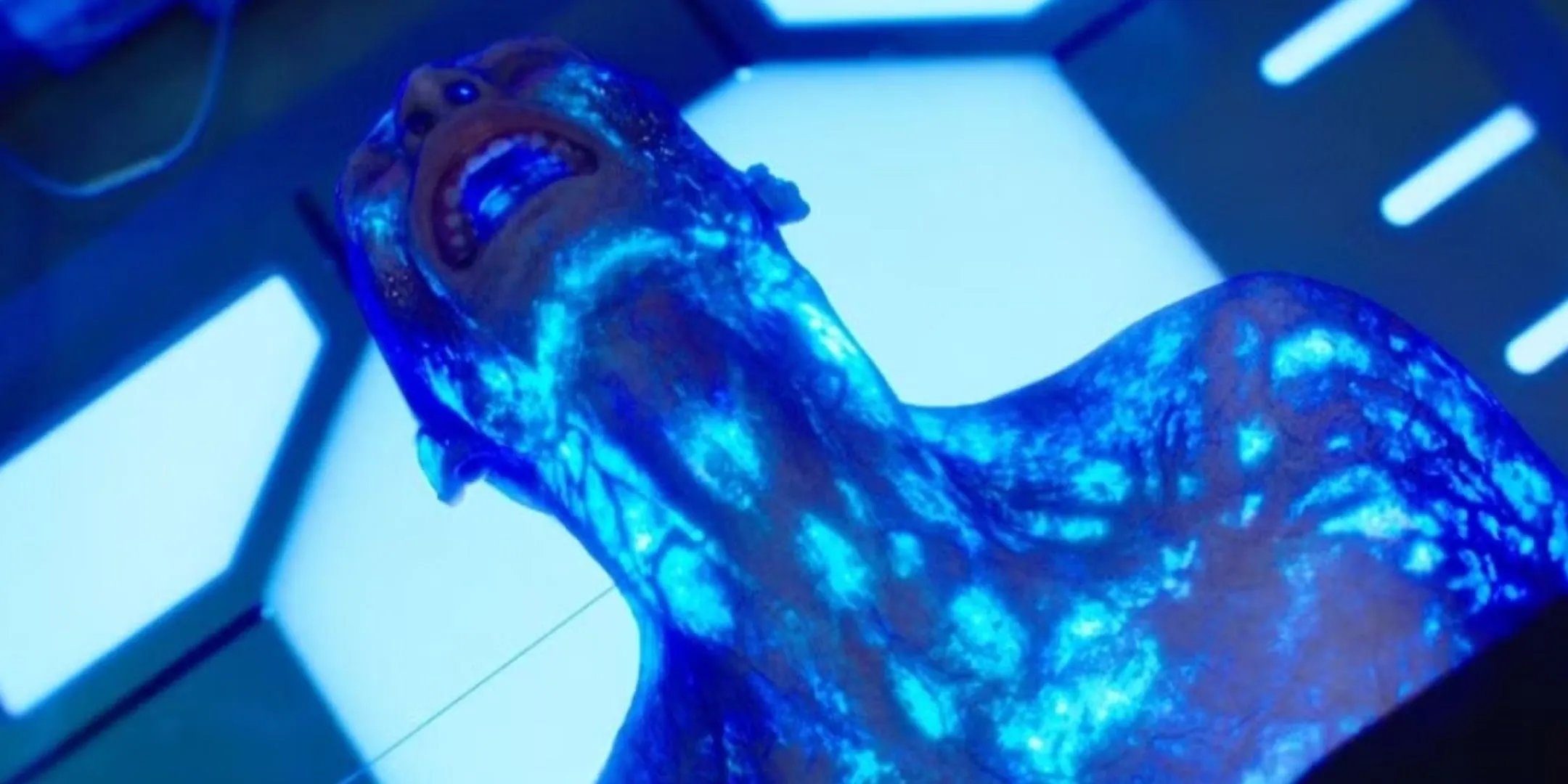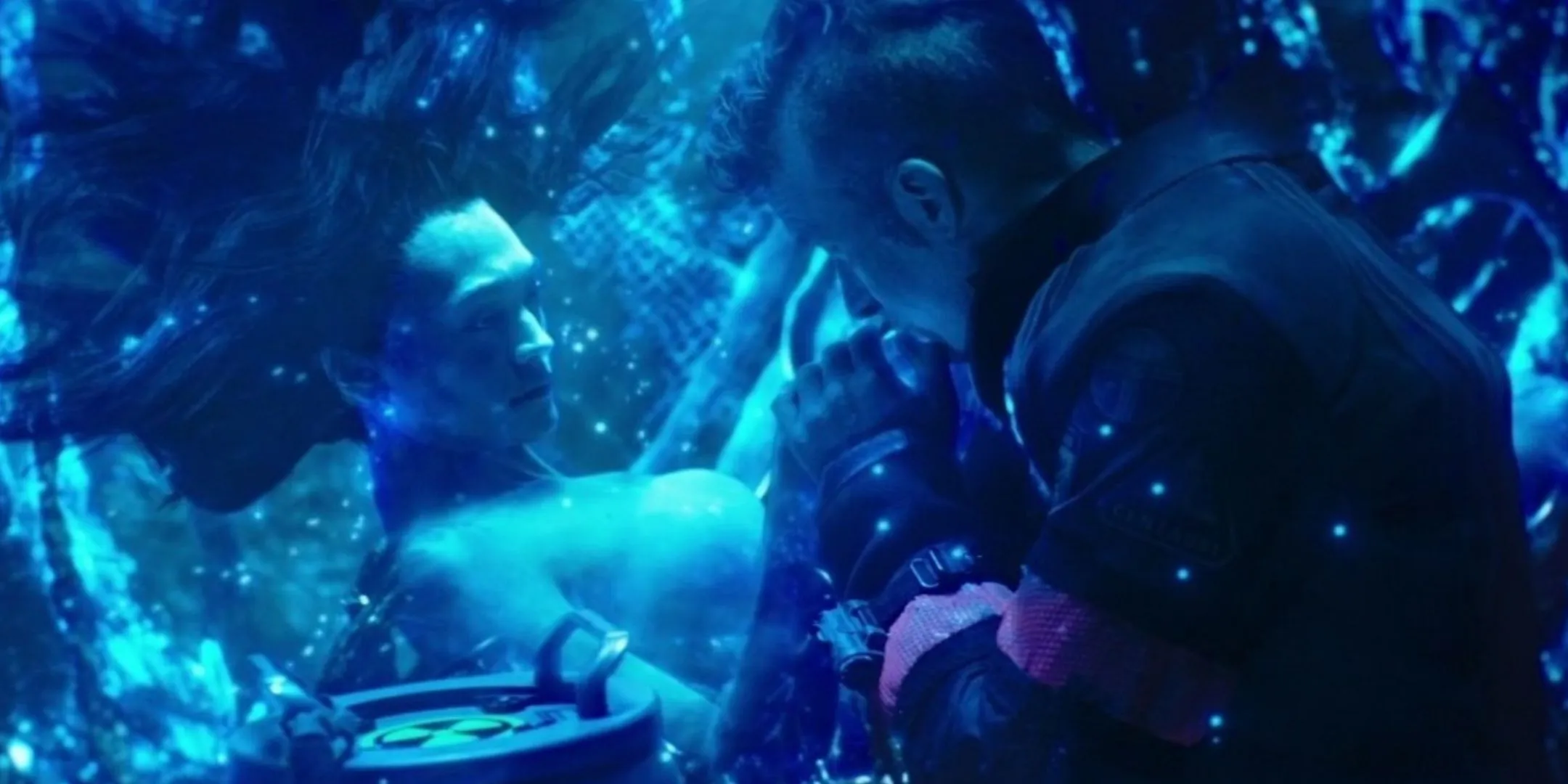The Expanse originated as a critically acclaimed series of science fiction novels authored by James S.A. Corey, a pseudonym for the collaborative writing team of Daniel Abraham and Ty Franck. The journey from page to screen began in 2015, when the Syfy network premiered the first season. Although Syfy canceled the series after its third season, Amazon Prime Video later intervened, producing three additional seasons. The conclusion of Season 6 marks the end of the show’s narrative arc, yet there remain several books in the saga that have yet to be adapted.
While the adaptation remains largely faithful to the source material, there were necessary changes made to better fit the storytelling format of television. One of the most noticeable modifications pertains to the appearance of the Belters—characters from the outer regions of the solar system. Moreover, the show did not limit its visual alterations to the Belters
The Protomolecule’s Unique Blue Glow: A Key Adaptation
Corey’s Inconsistent Descriptions of the Protomolecule

The Protomolecule represents a pivotal concept within both The Expanse and its originating novels, acting as the first significant addition to the science fiction genre within the narrative. Unlike other franchises like Star Wars or Star Trek, which feature more fantastical elements, The Expanse maintains a grounded approach to its sci-fi themes. The Protomolecule possesses mysterious properties that initially perplex the central characters, leading to varied descriptions across the novels. However, the live-action series cleverly introduced a striking blue glow for the Protomolecule, aiding viewers in recognizing and understanding its presence onscreen.
While the books contain vivid and often gruesome descriptions of the Protomolecule’s effects on living creatures, the actual portrayal of the substance is rather inconsistent. James S.A. Corey typically emphasizes the consequences of the Protomolecule’s actions rather than its immediate visual representation. This narrative choice makes sense given the enigmatic nature of the substance—it needs to appear incomprehensible, yet still relevant to the plot. In the context of a television series, introducing the blue glow was an astute decision that resolved potential narrative confusion.
Understanding the Protomolecule: Its Origins and Purpose
The Protomolecule: Terraforming Technology Misunderstood



Initially, the Protomolecule presents itself as a highly advanced weapon; however, its true purpose is far from malicious. Instead, it functions as a sophisticated terraforming technology created by an extinct extraterrestrial race known as the Ring Builders. This technology was meant to reach Earth two billion years before the events of The Expanse, guiding primitive microscopic life toward a development trajectory akin to that of the Ring Builders’ own planet.
When humans first made contact with the Protomolecule in the mid-24th century, the technology was entirely unprepared for this interaction. A delivery device from the Ring Builders entered the solar system, becoming ensnared by Saturn’s gravity, where it remained for eons before being misidentified as one of the planet’s moons, named Phoebe. Since Earth was not subjected to terraforming, the Ring Builders never set foot on the planet. Thus, when the Protomolecule came into contact with human life, it began its programmed transformation, modifying organic matter according to blueprints left by the Ring Builders.
The main complication arose from the fact that the Protomolecule was designed solely for use on simple organisms, creating catastrophic outcomes when applied to complex life forms. Consequently, living beings were dismantled and reconfigured, resulting in the widespread misconception that the Protomolecule was a weapon.
A Successful Adaptation: The Protomolecule in The Expanse Show
Balancing Vision and Realism in Live Action

The Protomolecule is a nebulous and abstract concept in Corey’s novels, resulting in varied and potentially inconsistent interpretations by readers. Translating such ambiguous concepts into a live-action setting poses distinct challenges; however, The Expanse managed to provide a clearer, more cohesive interpretation that maintains the essence of the original material while enhancing audience comprehension.
Although the adaptation could have strictly adhered to Corey’s descriptions, such fidelity may have diluted the impact of the story. As a critical element of the narrative, it was crucial to accurately portray the Protomolecule. Fortunately, the adaptation succeeded in integrating it seamlessly with the other narrative elements. Given the involvement of both authors in the production of The Expanse, it is likely that any revisions made to the Protomolecule’s portrayal were mutually agreed upon.


